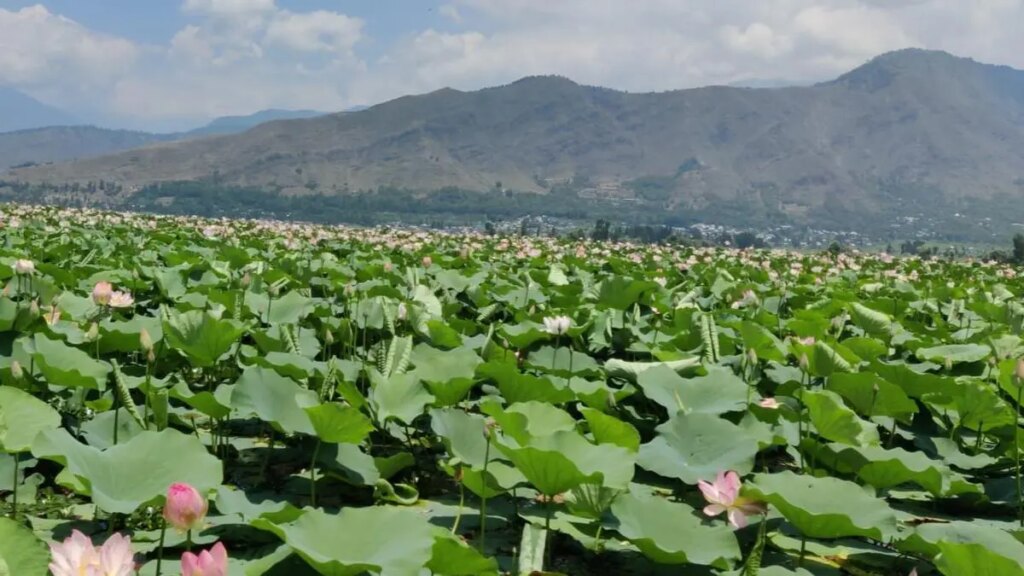
The return of lotus has not only revived the lake’s ecology but also reignited economic hopes for communities that once depended on it
After more than three decades, nadru (lotus stem) is set to make a comeback in Kashmir’s Wular Lake, with lotus flowers now blooming across vast stretches of the water body.
For the first time since 1992, lotus flowers have emerged over an area of 4 to 5 square kilometres in Wular Lake. The revival follows a decades-long absence after a major flood disrupted the ecosystem and buried the lotus plants under layers of silt.
Wular Lake, Asia’s second-largest freshwater lake, spans over 200 square kilometres and is among the most heavily silted water bodies in the Kashmir Valley. In recent years, authorities have carried out large-scale desiltation to restore ecological balance and revive biodiversity.
Altaf Hussain, Coordinator of Water Management at the Wular Conservation and Management Authority (WUCMA), told businessline that the desiltation work was carried out from 2020 to 2023.
“We are essentially restoring it to its original wetland condition,” Hussain said.
He added that desilting was successfully completed over 4 to 5 square kilometres.
“We have also restored the water level to an average depth of 4 to 5 feet in that area. The efforts to reclaim the lake and its ecosystem are ongoing,” he said.
After the desiltation work, lotus began to reappear in the lake in 2024. This year, authorities also sowed seeds to help the revival process.
“We are happy to see flowers blooming again in the lake after so many years. It feels like the lake has sprung back to life. For years, we only saw silt and weeds. Now, there’s beauty and hope on the water again,” said Ghulam Hasaan, a resident of Bandipora district.
The return of lotus has not only revived the lake’s ecology but also reignited economic hopes for communities that once depended on it.
“Nadru was an essential part of our family’s economy. Over the last three decades, it vanished completely, affecting the livelihood of hundreds of families in the area,” said Ghulam Nabi Parray, another resident.
He said the revival has brought a sense of optimism among locals.
Hundreds of families in several villages around Wular Lake — including SK Payeen, Kolhama and Goorora — once relied on it for their livelihood. From harvesting nadru to fishing and collecting water chestnuts, the lake supported local economies for generations. But its ecological decline over the past decades dealt a severe blow to these communities, cutting off key income sources.
“Nadru holds a special place in Kashmiri cuisine. Kashmiri Pandits and Muslims alike use it in a variety of traditional dishes”, said Naresh Munshi, a Kashmiri Pandit .
“It’s not just a crop but a part of our culture. Its return means both economic support and cultural revival for many of us”, he added.
Published on July 11, 2025

